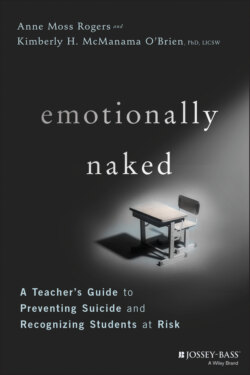Читать книгу Emotionally Naked - Anne Moss Rogers - Страница 19
THE RISE IN TEEN MENTAL HEALTH PROBLEMS
ОглавлениеA study by Twenge and colleagues (2019)2 found that between 2008 and 2017, mental health problems, including self-harm behaviors, grew substantially for the youth subset of the population. They found that by 2017, 13% of youth had symptoms consistent with major depression in the previous year, which represented a 62% increase in eight years. Scholars and advocates posit a variety of reasons for the rise in mental health issues among today's youth. Technology and too much screen time, constant social comparison exacerbated by social media, emphasis on happiness and nonacceptance of difficult emotions, the academic and extracurricular rat race, helicopter parenting, transitions, and the disruption of relationships (whether that's a family divorce, death of a loved one, or loss of a romantic partner) all contribute.
When the digital age moved in, that which we thought would connect us more instead pushed us apart in many ways. It was during the early 2000s that we began to see an increase in student mental health problems. Poor sleep hygiene, the result of increased screen time and 24/7 Internet access via mobile phones, exacerbated those issues because youth sacrificed precious slumber time for late-night chats and video watching. As the digital revolution has grown, each generation has less face time with friends than the one before, which means youth are getting fewer opportunities to learn, fail, and problem solve. Add to that the fact that extended family often lives out of town and community programs and interactions have a reduced role in our lives, further fracturing the community of connection and support. Humans crave contact with each other, and lack of it can leave teenagers feeling anxious, small, insignificant, and devoid of opportunities to develop important life skills.
If you are an adult who grew up before 1995, think about how much you learned when you played games outside with friends in your neighborhood. You learned to negotiate, compromise, and argue in an effective way. There was no referee other than the peer-appointed kid who lived on the corner, so you had to work it out. Failure is a part of life and a learning opportunity, but so many students have no idea how to manage it because what little unstructured time they do have is now spent on digital screens. Victor Schwartz, MD, Clinical Associate Professor, Department of Psychiatry, NYU School of Medicine, points out that there are fewer community centers, religious-based organizations, and clubs like 4-H or Girl Scouts in today's culture (in some cases for very good reasons). These gathering places and clubs were commonplace in earlier generations and were settings where youth picked up a lot of life skills. This is where kids learned to run a program, organize something, learned how to deal with other people in planning a project. It's not the schools' fault that we've lost the whole notion of community centers, but are there ways to bring more of those skill-building opportunities in a more intentional way into academics? In Chapter 6, “Suicide Prevention Activities for Schools,” we present specific strategies and ideas that teachers from different regions are integrating into their curriculums to build that skillset. The effect of doing so reduces unhealthy coping such as self-harm, substance misuse, and suicide, and promotes more positive experiences in school and beyond.
